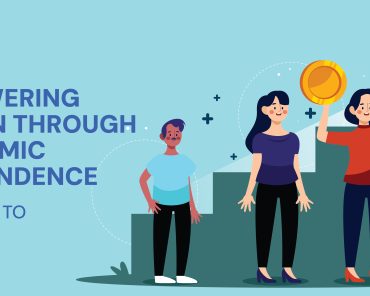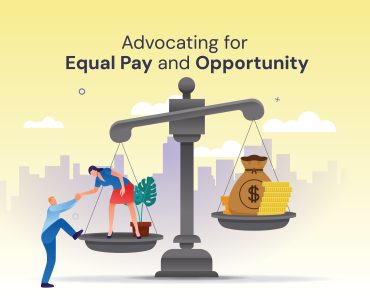By ayoti
The Evolution of Feminism – What It Means to Be a Woman Today
Women’s rights or feminism has come a long way from what it was in the late 19th and early 20th century. The change shows the evolving needs and ambitions of women globally and provides insight into what it is to be female in the 21st century. Today, it has evolved so much more than the very early and basic goals of equality in voting rights and includes more complex rights to address issues like gender equality in the workplace, reproductive rights, body autonomy, and activism for support of minority races, sexual orientations, and gender identities. It is evident that each generation has incorporated new views, making the movement very complex. Let’s take a closer look at the development of the feminist movement and what it means to be a woman in today’s society.
The Waves of Feminism
The journey of feminism is generally subdivided into waves, which characterize the different aims and strategies of the movement based on the evolution of the landscape.
First Wave (Late 19th – Early 20th Century): The earliest days of feminism were during the time of the Industrial Revolution and social change, which mainly debated legal rights such as women’s suffrage, property rights, and the right to education. Leaders that supported the process included Susan B. Anthony, Emmeline Pankhurst, and Sojourner Truth, who pressed for women’s suffrage, a groundbreaking move in women’s liberation.
Second Wave (1960s – 1980s): The second Wave expanded the spheres of feminism to cover questions such as reproductive rights, equal opportunity at work, and violence against women. An influential book published in this period, Betty Friedan’s The Feminine Mystique, revealed the unhappiness of women who were trapped in the image of domesticity. This sparked a movement for women to fight this inequality and go beyond staying content with just being homemakers. This period also focused on intersectionality, where black feminists and LGBTQ advocates were demanding quality treatment for all women regardless of their colour, race and sexual orientation.
Third Wave (1990s – 2000s): In the early nineties, the direction of feminism started changing, and it became more of an individualism. Some Feminists like Rebecca, Walker and bell hooks brought attention to personal empowerment, individual choice, and rejection of rigid gender roles as some of their themes. The third Wave challenged stereotypical expectations of who or what a woman was and where she belonged or what she could do, including homemaking, working in a corporate job or any other path in between.
Fourth Wave (2010s – Present): The fourth Wave of feminism has been conducted through the use of the media and social justice warfare involving the #MeToo movement about the issue of sexual abuse. This Wave emphasizes body positivity, gender inclusivity, and intersectionality because gender is one of the many aspects influencing women’s experiences. Today’s feminism demands that women of all cultures, colours, sizes, shapes, sexualities, and classes be respected and valued equally.
What does feminism mean today?
Nowadays, feminism is more diverse, complex, open-minded and flexible than ever before. It is no longer restricted to the binary understanding of male or female, and it does not expect all women to think in the same way or act in the same manner. Modern feminism is about the ability to choose how we live and what we do, and appreciate the differences in women. Here’s how it shapes what it means to be a woman in today’s society:
- Embracing Intersectionality:
The word “intersectionality” was coined by the legal scholar Kimberlé Crenshaw and denotes the interconnected nature between social categories, for example, race, class, or gender, which can lead to an entanglement of discriminative systems. Modern feminism cannot help but realize that there is no single, generalized experience of being a woman; this experience depends on ethnicity, class and income, orientation, and ability. This approach helps us to have a positive attitude to every woman’s story and to recognize how these identities influence a woman in society.
2. Body Positivity and Autonomy:
Body positivity has become a key factor of contemporary feminism, promoting the belief that women should feel confident in their own skin without necessarily having to meet certain societal standards. This goes beyond the external aspect and embraces the choice of what has to be done to the body. Issues about reproductive rights, a healthy state of mind, and sexual self-determination are provided without prejudice thus empowering women to take control of their bodies without any shame or judgment.
3. Career Empowerment and Economic Equity:
Today, feminism means equal wages for equal work, thus closing the gender gap and removing workplace discrimination. Women are now heading companies and making their presence felt in executive positions as well as politics, technology, sports, etc. Even new corporate policies are emerging from organizations with women at their steering wheel. Feminism also demands work-life balance on their own terms, whether they wish to be an entrepreneur, work from home, climb the corporate ladder or decide to be home mothers.
4. Redefining Gender Roles:
Today’s feminism differs from that of the seventies and poses no threats to gender roles. Instead, it presents a vision for a better society where males and females are equal. It is okay for men to talk – about women’s issues or about the redefinition of masculinity to accommodate the hitherto shunned ‘effeminate’ traits such as crying. In essence, it helps to remove confines within society that dictate the typical feminine or masculine qualities people need to portray.
The Challenges Ahead
Even though there is progress, feminism still faces challenges. Women still have to fight for rudimentary rights, are facing violence, have to deal with a lack of education in certain rural areas, and suffer from limited career opportunities. This includes even the progressive societies, where gender discrimination, wage gap, and reproductive rights are major concerns. Feminists also have to wrestle with internal arguments, such as how to handle personal empowerment with collective goals and how to handle evolving understandings of gender.
Conclusion
The evolution of feminism shows the resilience, diversity, and adaptability of women. It started from a fight for basic rights to a huge movement about embracing one’s own choice, cultural diversity, and a promise of justice for all voices. To be a woman of today is to have the mental, emotional and physical freedom to define her identity, try for equality, and celebrate the growth of women who advocated for women who will come after. However, the journey of feminism is far from over, and it is a step forward towards a world where every woman can live a life on her own terms with dignity, respect, and freedom.





